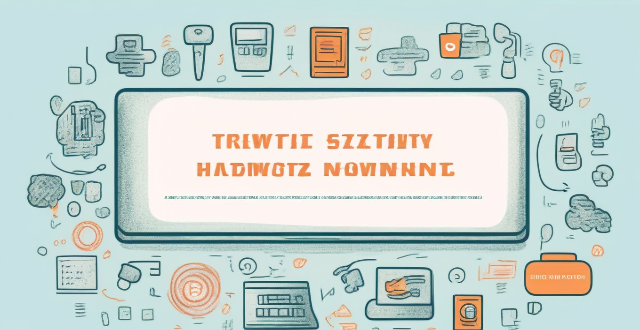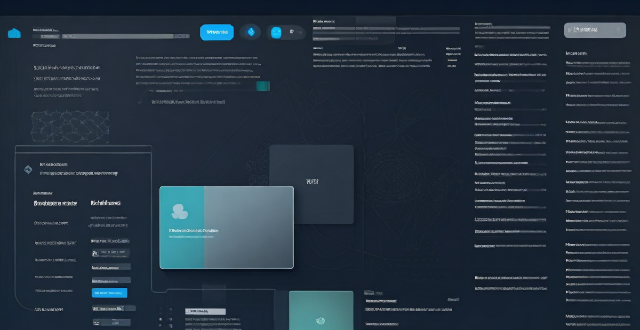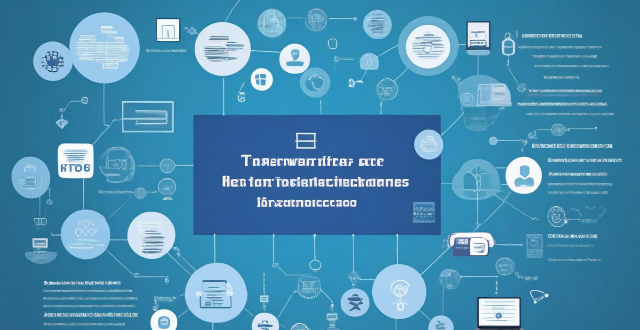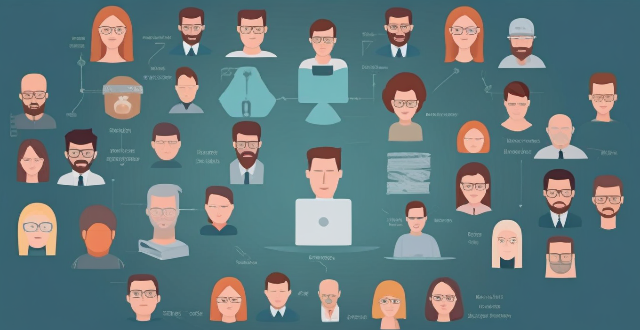Software Attack

What is the most common type of cyber attack ?
Phishing attacks are the most common type of cyber attack, involving tricking individuals into providing sensitive information by posing as a trustworthy entity. They can be carried out through email, social media, or phone calls and involve spoofing, luring, and stealing. Examples include email phishing, spear phishing targeting specific individuals, and whaling targeting high-profile individuals. To prevent phishing attacks, individuals and organizations should educate themselves on identifying and reporting phishing attempts, implement multi-factor authentication, keep software and antivirus programs up-to-date, and use strong and unique passwords for each account.

What are the most common types of network attacks and how can they be prevented ?
The article outlines the most common types of network attacks and their prevention measures. These include phishing, malware, DoS/DDoS, MitM, SQL injection, XSS, insecure network services, insider threats, password attacks, and wireless network attacks. For each type of attack, the text provides a brief explanation followed by specific prevention strategies. The conclusion emphasizes the importance of a layered security approach that combines education, monitoring, and rapid response to mitigate risks and protect assets.

How can I improve my productivity with educational software ?
Educational software can be a powerful tool to enhance your productivity, but it's essential to use it effectively. Here are some tips on how you can improve your productivity with educational software: 1. Set clear goals and objectives before using any educational software. This will help you select the right software that aligns with your needs and ensure that you stay focused on what you want to achieve. 2. Choose the right software for your specific needs. Look for software that is user-friendly, engaging, and relevant to your learning goals. Consider factors like cost, accessibility, and compatibility with your devices. 3. Use the software regularly. Consistency is key when it comes to improving your productivity with educational software. Make a schedule for when you will use the software and stick to it. Even if you can only devote a few minutes each day, regular use will help reinforce your learning and keep you on track. 4. Take advantage of interactive features like quizzes, games, and simulations. These can be great tools for reinforcing your learning and making the process more engaging. Be sure to take advantage of these features whenever possible. 5. Track your progress. Keeping track of your progress is an excellent way to stay motivated and see how far you've come. Many educational software programs have built-in tracking features that allow you to monitor your progress over time. If your software doesn't have this feature, consider using a separate tool like a spreadsheet or journal to track your progress manually.

How can I protect my home network from cyber attacks ?
The text provides a topic summary on how to protect your home network from cyber attacks. It suggests changing default settings such as passwords and firmware, using strong passwords, securing your Wi-Fi network with WPA2 encryption, keeping devices updated with software patches and antivirus software, and educating yourself and family members about safe online practices. Following these steps can help reduce the risk of cyber attacks and keep personal information secure.

What are the risks associated with using public Wi-Fi networks ?
Using public Wi-Fi networks can expose you to various risks and vulnerabilities, including Man-in-the-Middle attacks, unencrypted data transmission, malware distribution, phishing scams, insufficient security measures, lack of privacy, session hijacking, and denial of service attacks. To protect yourself from these risks, it is essential to take precautions when using public Wi-Fi networks, such as using a virtual private network (VPN), avoiding sensitive activities like online banking or shopping, and keeping your device's software up-to-date with the latest security patches.

How can I ensure my business is protected from cyber threats ?
To ensure your business is protected from cyber threats, consider implementing measures such as educating employees on cybersecurity, using strong passwords and two-factor authentication, keeping software up-to-date, using antivirus and anti-malware software, securing networks with firewalls and encryption, backing up data regularly, limiting access to sensitive information, monitoring network activity, and developing incident response plans.

Did Apple introduce any new services or software updates at the event ?
Apple's latest event introduced several new services and software updates. The new services include Apple Music Voice Plan, Apple Maps with interactive 3D experience and immersive walking directions, and Apple Fitness+ with group workouts and integration with Apple Watch's activity rings. The software updates include iOS 15 with Focus Mode improvements, Live Text in Photos, and enhanced Memories; iPadOS 15 with App Library and Home Screen changes, multitasking improvements, and Quick Note and Scribble features; watchOS 8 with a Mindfulness app, new Workout app, Portrait Watch Faces, and respiratory rate tracking; and tvOS 15 with Home Screen updates, Shared With You, new interactive features, and HomeKit and accessory updates. These new services and software updates showcase Apple's commitment to enhancing the user experience across their ecosystem of devices.

What is ransomware and how does it work ?
Ransomware is malicious software that blocks access to computer systems or data until a ransom is paid. It spreads through phishing emails, exploit kits, and drive-by downloads. Once activated, it encrypts files and demands a ransom for the decryption key. Paying the ransom doesn't guarantee data recovery, and the malware may remain on the system. The impact includes data loss, downtime, reputational damage, and financial costs. Prevention involves regular backups, software updates, user education, security tools, and an incident response plan.

How does social engineering pose a risk to communication security ?
The Risks of Social Engineering to Communication Security discusses the dangers of social engineering, a form of manipulation that tricks people into sharing confidential information. Social engineering is a significant threat to communication security because it can infiltrate trusted environments, manipulate human emotions, be difficult to detect, use a variety of attack vectors, lead to data breaches, and lack awareness and training. To protect against social engineering attacks, organizations must implement comprehensive security awareness programs, establish strict verification procedures for sensitive requests, and create a culture of security where employees are encouraged to report suspicious activities without fear of reprimand.

What are the risks of connecting to a public Wi-Fi network ?
Connecting to a public Wi-Fi network can expose your device and personal information to various risks, including man-in-the-middle attacks, malware distribution, unauthorized access to your device, snooping and data theft, and social engineering attacks. To mitigate these risks, it is recommended to use a Virtual Private Network (VPN) to encrypt your internet traffic, keep your operating system and antivirus software up-to-date, enable your firewall, use websites with HTTPS encryption, verify the authenticity of the Wi-Fi network before connecting, and be cautious about which websites you visit and what information you enter while connected to public Wi-Fi.

How do I recognize the signs of a heart attack and what should I do ?
Recognizing the signs of a heart attack is crucial for immediate and effective response. Symptoms include chest pain or discomfort, pain in other areas such as arms or jaw, shortness of breath, nausea, lightheadedness, cold sweat, and fatigue. If symptoms are present, call emergency services immediately, do not drive yourself, consider taking aspirin if not allergic, find a comfortable position, loosen tight clothing, monitor symptoms, and follow professional advice upon arrival of help. Acting quickly can significantly improve recovery chances and survival rates.

What are the most common types of telecommunications fraud ?
Telecommunications fraud is a serious issue that affects millions of people worldwide. It involves using technology to deceive individuals or organizations for financial gain. Here are some of the most common types of telecommunications fraud: 1. Phishing Attacks: In this type of attack, cybercriminals send fraudulent emails or messages that appear to be from a legitimate source, such as a bank or a government agency. The message typically asks the recipient to click on a link or provide sensitive information, such as login credentials or credit card details. Once the victim provides the requested information, the attacker can use it to access their accounts and steal money or personal data. 2. Vishing Attacks: In this type of attack, cybercriminals use automated phone calls or live callers to trick victims into providing sensitive information over the phone. The attacker may pretend to be from a legitimate organization, such as a bank or a government agency, and ask for personal information or payment for a fake service. 3. Smishing Attacks: Smishing, or SMS phishing, is a relatively new form of telecommunications fraud that involves sending fraudulent text messages to victims' mobile devices. These messages often claim to be from a legitimate source, such as a bank or a government agency, and ask for sensitive information or payment for a fake service. Unlike traditional phishing attacks, which rely on email, smishing attacks use SMS messages to reach victims directly on their mobile devices.

Can data encryption prevent data breaches and cyber attacks ?
Data encryption is a crucial security measure that can significantly reduce the risk of data breaches and cyber attacks by converting plain text into an unreadable format. However, it does not completely eliminate the risk of data breaches and cyber attacks. Encryption works through complex algorithms to scramble data so that it appears as random characters, requiring a secret key (or password) to decrypt the data back into its original form. There are two main types of encryption: symmetric and asymmetric. While encryption offers benefits such as confidentiality, integrity, authentication, and non-repudiation, it also has limitations including key management challenges, performance overhead, compatibility issues, human error, and advanced persistent threats (APTs). Therefore, organizations should implement other security measures such as firewalls, intrusion detection systems, regular security audits, and employee training programs to minimize the risk of cyber threats.

What are the risks associated with using outdated software ?
Using outdated software poses risks including security vulnerabilities, compatibility issues, and limited functionality. Regular updates are crucial for maintaining security, compatibility, and access to new features.

How does personalized learning through adaptive software benefit students ?
Adaptive software in education offers personalized learning experiences, enhancing student engagement, academic performance, and key skill development. It supports inclusive education, prepares students for future challenges, and makes learning more efficient and effective.

What software tools are available to help with budget creation ?
Budgeting is an essential aspect of financial planning, and there are several software tools available that can help with budget creation. Microsoft Excel, Google Sheets, Quicken, Mint, and YNAB are some of the most popular options. Each tool has its own set of features, pros, and cons that make it suitable for different types of users and budgeting needs.